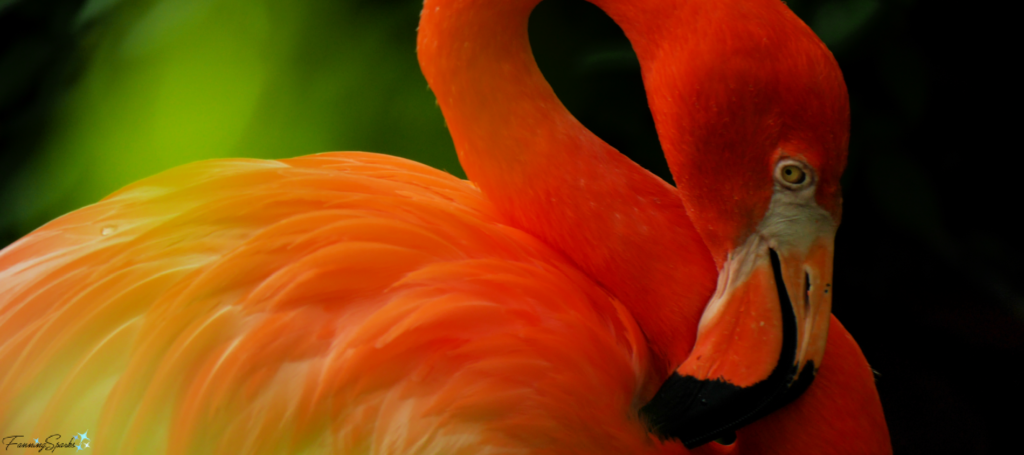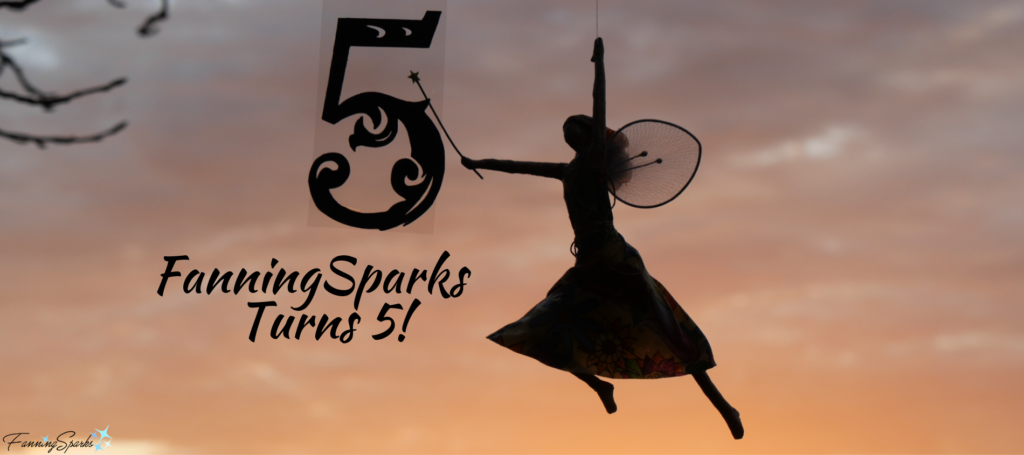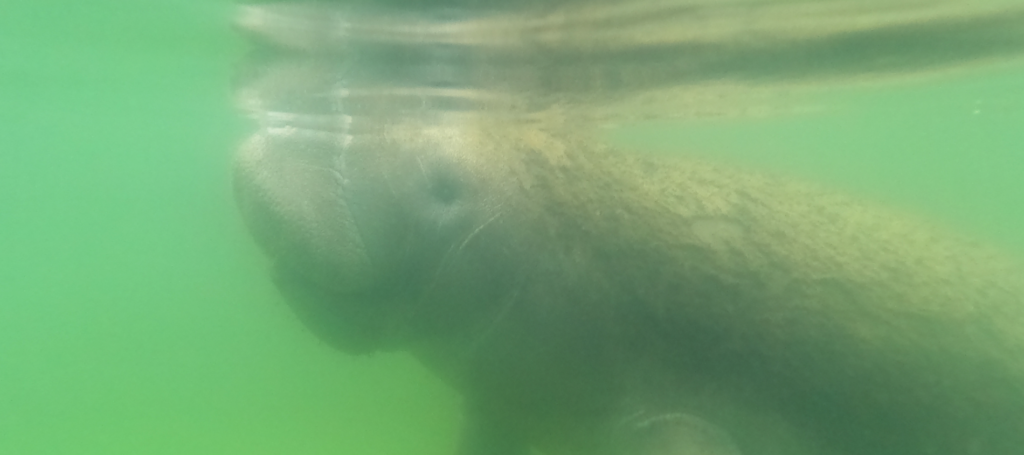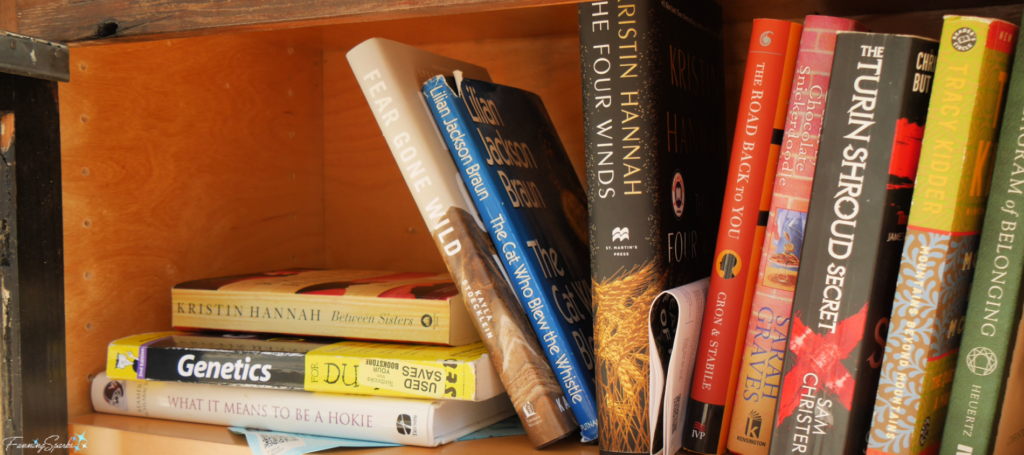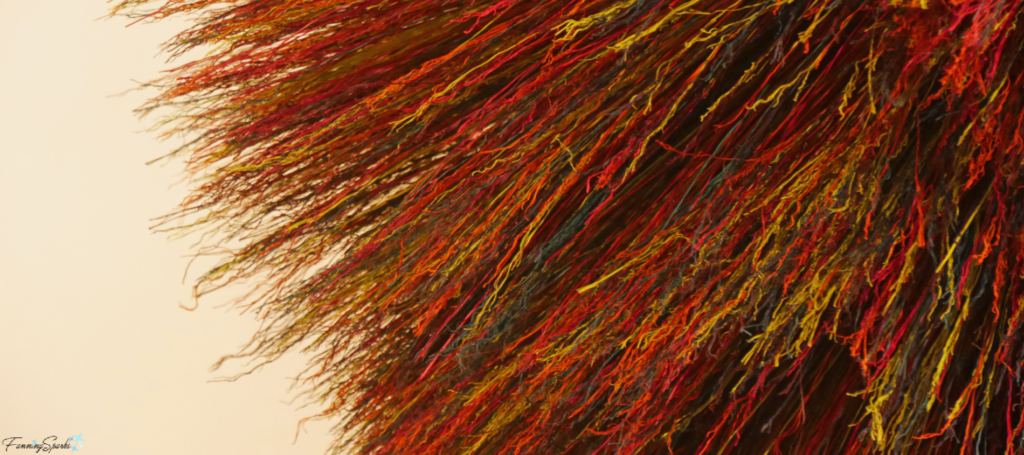Before visiting Florida recently, I did a little online research to determine where we could see flamingos in the wild. I assumed if we visited the right natural habitats these iconic birds would be easily sighted. After all, flamingos are found all over the state of Florida, aren’t they? Turns out, they’re not!
1, 2, 3, 4, 5! FanningSparks turns five this week! This is the 264th post since the blog was launched in March 2018. Every Tuesday morning, for the last five years, I’ve shared a blog post with the world. The stories have been illustrated with over 4,300 photos. Today’s blog post is about celebrating this milestone and taking a look behind the scenes of FanningSparks’ world.
But first, and most importantly, I want to thank you for being here! Thank you for reading the blog, viewing the photos and sharing your likes, comments and thoughts.
Recently, I found myself face to face with a manatee—with nothing but a little water and a snorkel mask between us! It was an unforgettable moment!
Manatees are marine mammals with large, gray, whale-like bodies. One species within the manatee family, the West Indian manatee (Trichechus manatus latirostris), has a subspecies which is native to Florida and known as the “Florida manatee”. The Florida manatee is believed to have existed in the Sunshine State for millions of years!
One of the many ways living in Singapore for a year spoiled me, was being surrounded by tropical greenery and exotic blooms all year round. My daily walks through Fort Canning Park enveloped me in the lush, green foliage of the regional flora.
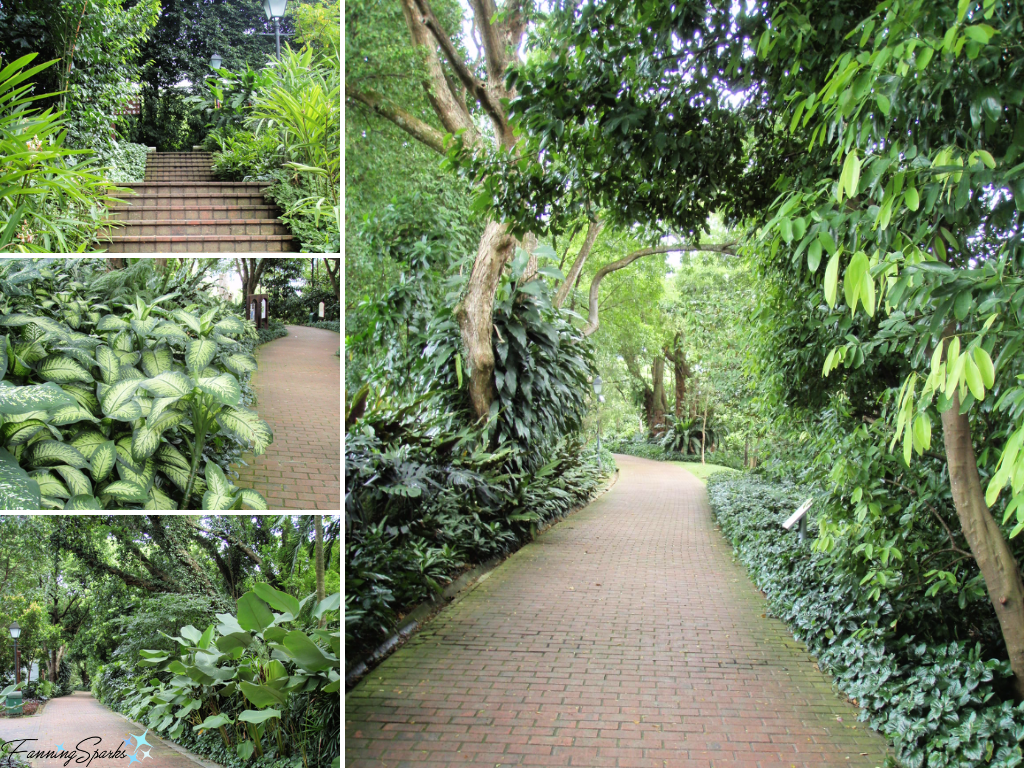
Singapore, which is located near the equator, has a tropical climate with abundant rainfall, high temperatures and high humidity throughout the year. While it took me some time to acclimate, various exotic flowers such as orchids thrive in this climate. I’d only ever seen orchids grown indoors so it was astonishing to see them growing out-of-doors. I even had the pleasure of visiting a local orchid farm (sorry I can’t remember the name) and seeing rows and rows of orchids growing in open fields.
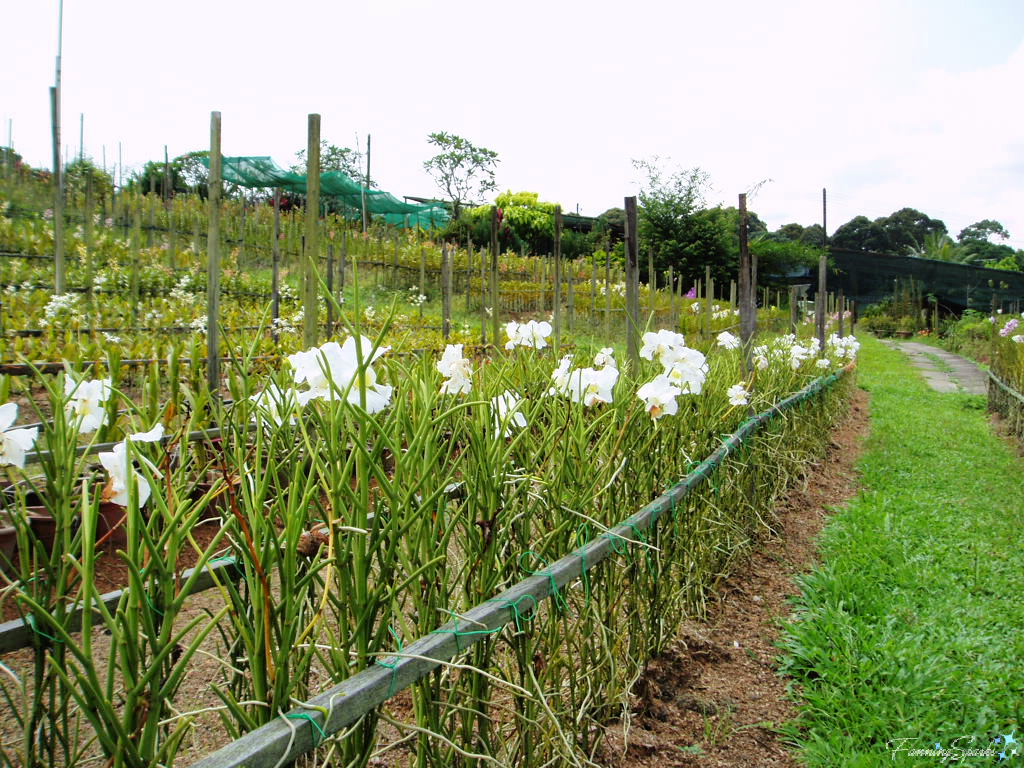
Wandering amongst thousands of blooming orchids was an unforgettable experience!

It’s no surprise, then, that the Singapore Botanic Gardens features a spectacular orchid garden. “With over 1000 species and 2000 hybrids on display, the splendour of these gorgeous blooms is absolutely a sight to behold” says the National Orchid Garden website. The splendid “Crane Fountain” greets guests as they enter the National Orchid Garden.
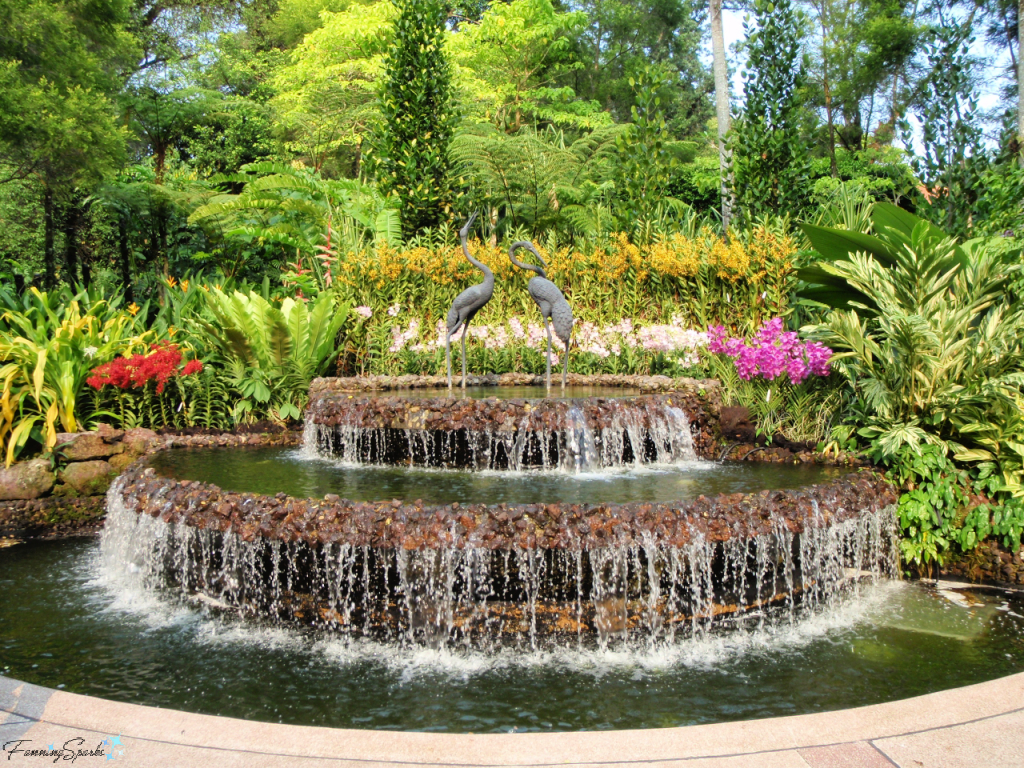
The garden showcases a series of gorgeous “orchidscapes” where the flowers are displayed in natural settings to their maximum advantage.
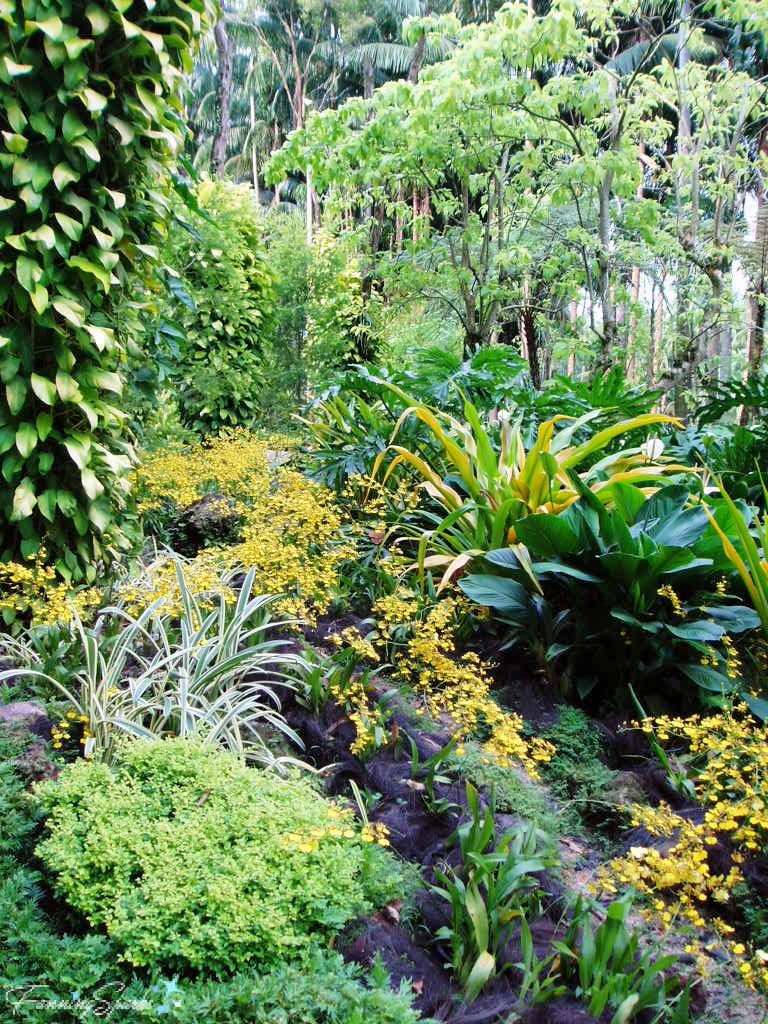
I had the pleasure of visiting these gardens numerous times and never tired of seeing the vibrant colors and intricate details of the beautiful blooms.
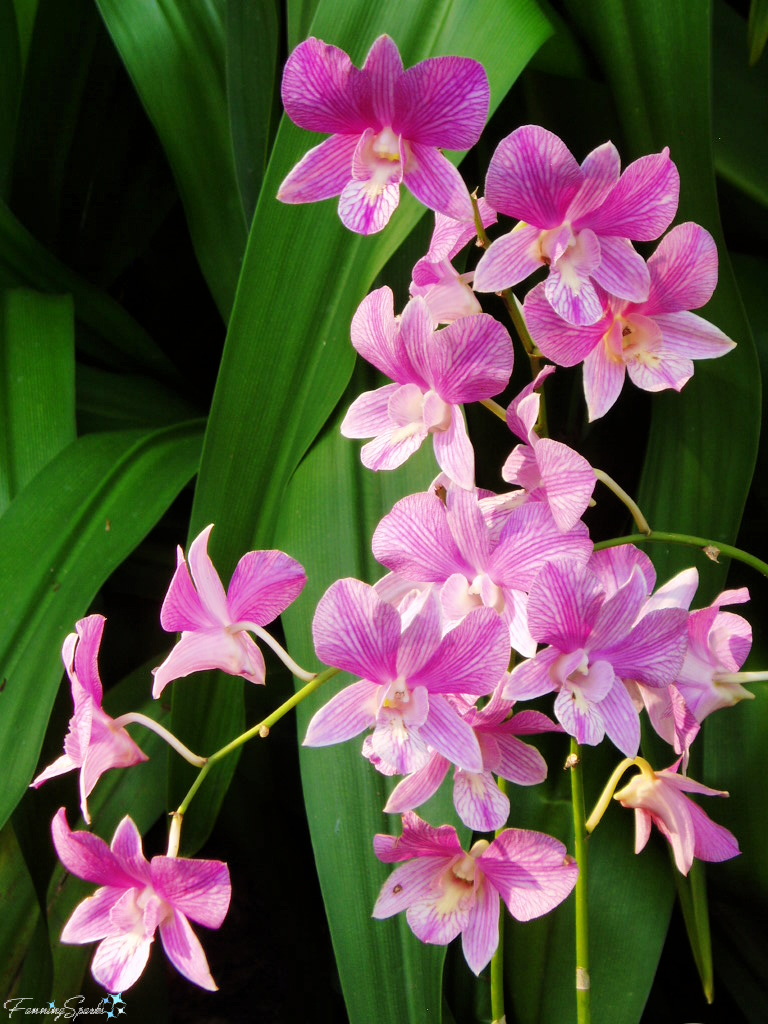
Interestingly, one of the orchids showcased in the VIP Orchid Garden display is Singapore’s national flower. It is the Papilionanthe ‘Miss Joaquim’ (formerly Vanda ‘Miss Joaquim’) which is a hybrid discovered by Agnes Joaquim over 130 years ago. “For its resilience and year-round blooming quality, it was chosen on 15 April 1981 to represent Singapore’s uniqueness and hybrid culture.” states Wikipedia.

While I will always associate these beautiful flowers with the tropical climate of Singapore, orchids grow in many climates. In fact, orchids can be found in almost every habitat around the world except glaciers. “No other group in the plant kingdom can match the incredible diversity found within the orchid family (Orchidaceae). The range of plant forms and sizes, along with the far greater variety found among the colors, shapes, and sizes of their flowers, dazzles anyone who takes the time to investigate these marvelous creations of nature.” declares author Thomas J. Sheehan in his book Ultimate Orchid.
Orchids are found in every color except true black. Grouped into about 760 genera, there are about 28,000 naturally occurring species and hundreds of thousands of manmade hybrids in the orchid family. Nearly half, 260 to 300 genera, are found in tropical Asia.
Nowadays, I call Georgia home and I enjoy orchids as houseplants and inside the conservatories of nearby botanical gardens. Orchid Daze, an annual indoor plant exhibition at the Atlanta Botanical Garden, is one of my favorite events. The Garden’s outstanding orchid collection, one of the largest at any public garden in the world according to their website, takes center stage.
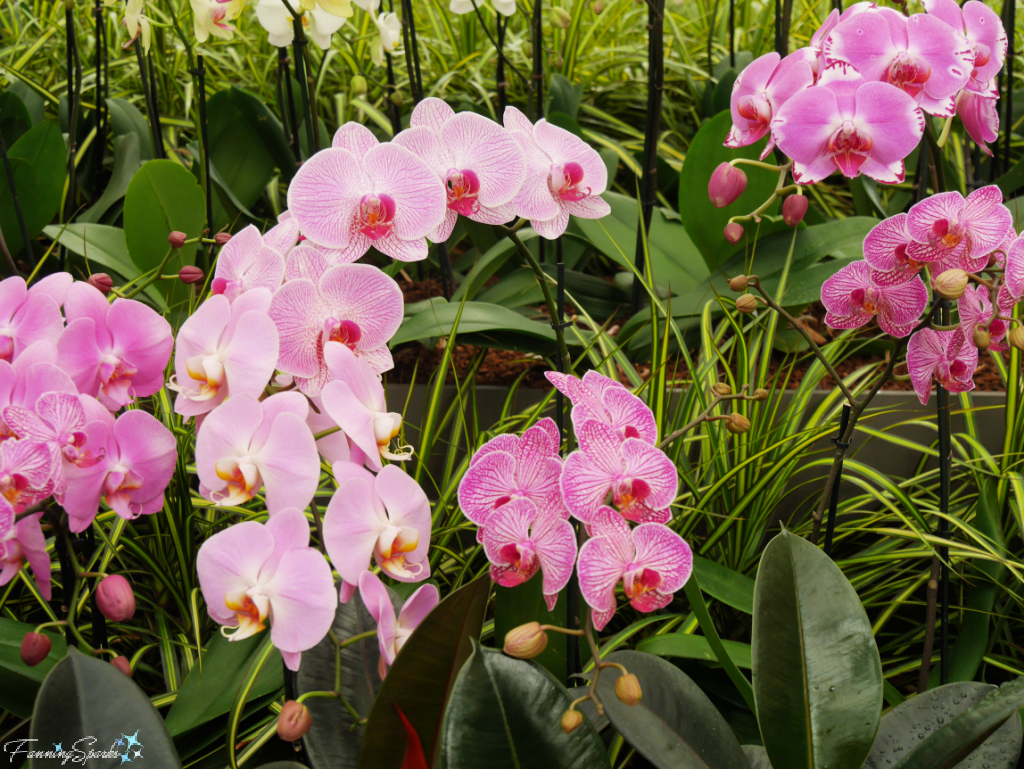
This year, the Orchid Daze exhibition features “strikingly beautiful inventive murals by three Southeastern artists” created especially for the event. Niki Zarrabi’s bold, surrealist orchid blooms greet visitors in the Conservatory Lobby.
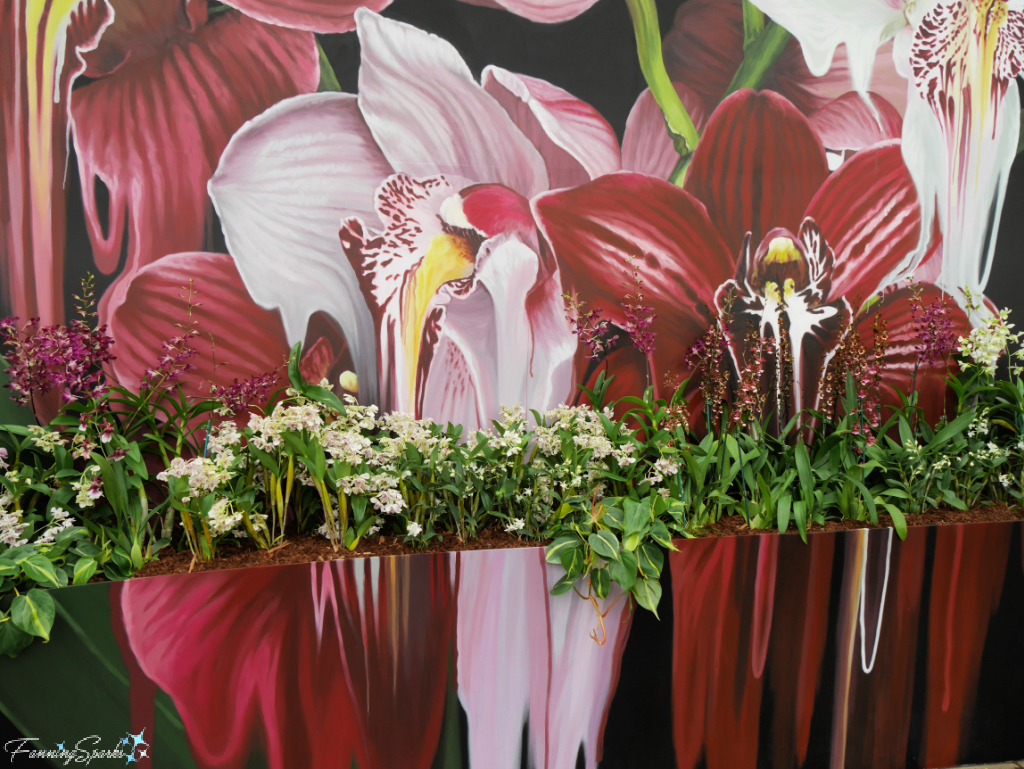
 A captivating mural by Janice Rago provides the perfect backdrop for the masses of colorful orchids in the Orchid Center Atrium.
A captivating mural by Janice Rago provides the perfect backdrop for the masses of colorful orchids in the Orchid Center Atrium.

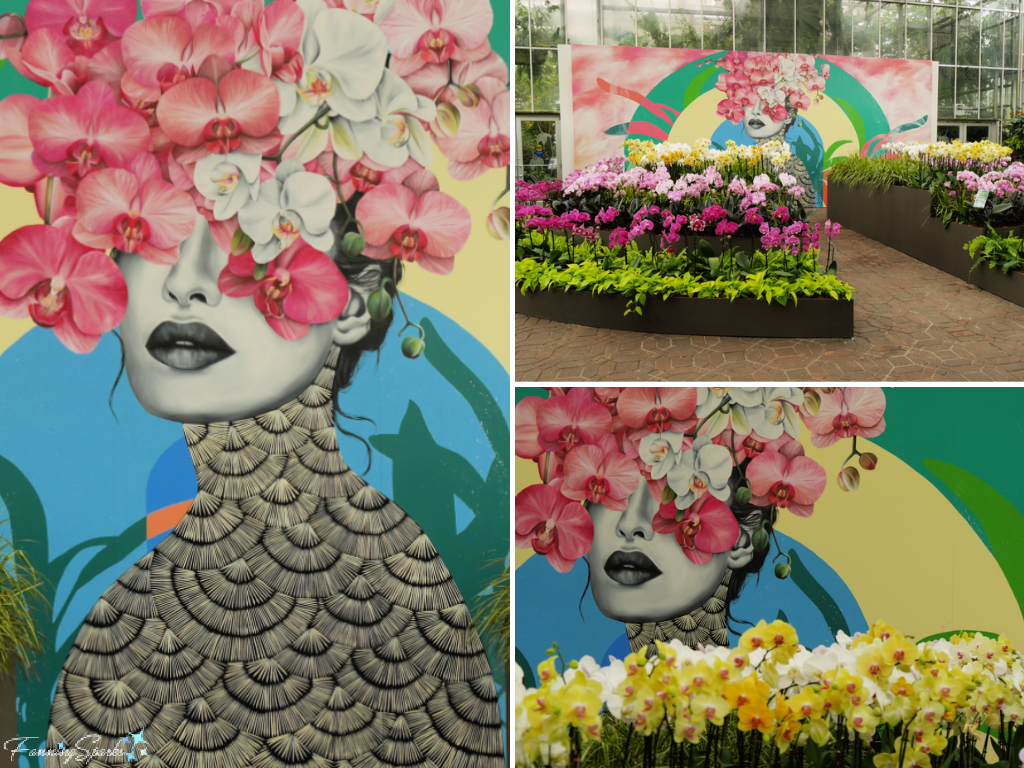
The Orchid Display House features a mixed-media installation with a playful hexagon motif by Lara Nguyen.
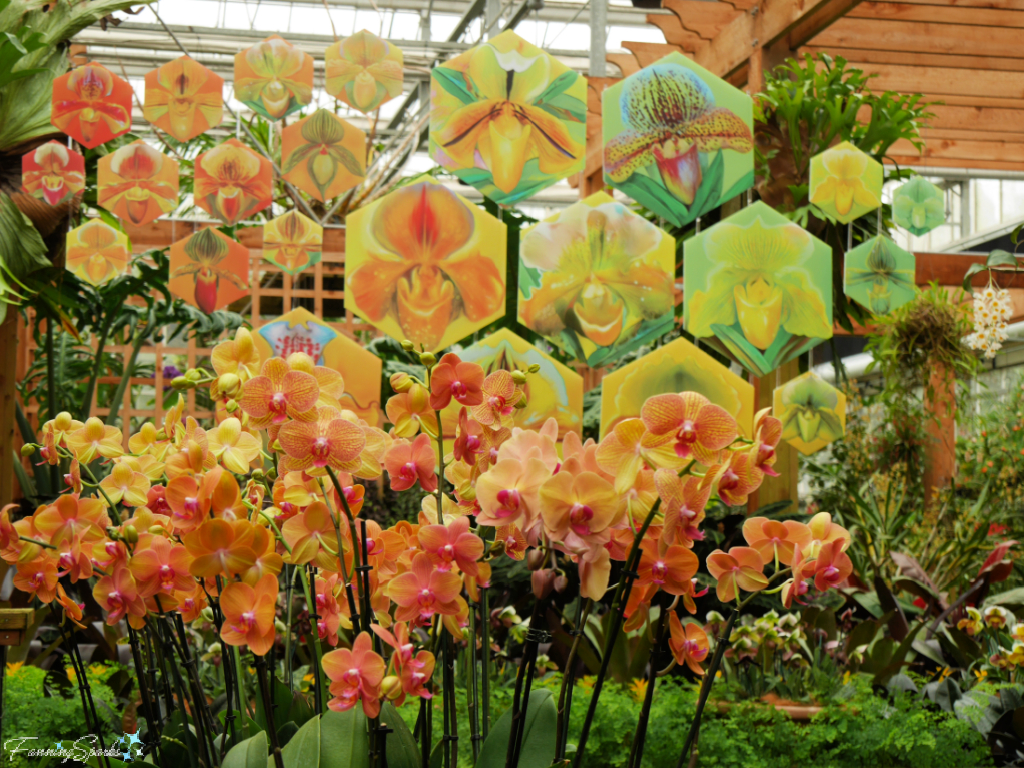
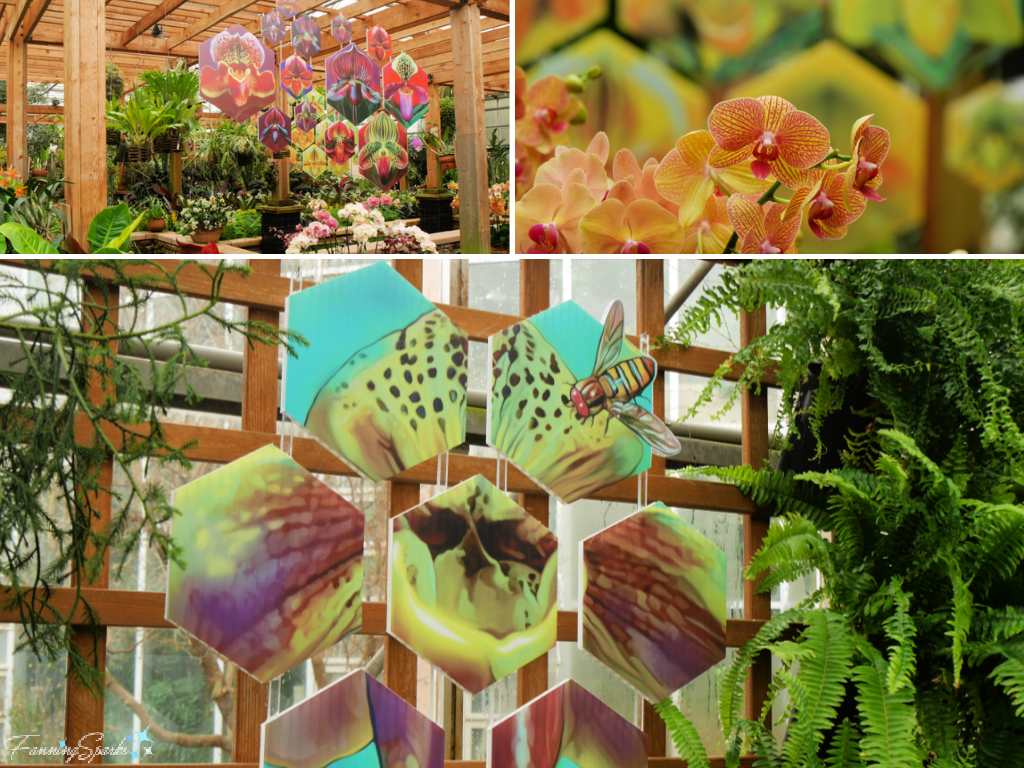
I’ll conclude with a few additional favorites I spotted at the Atlanta Botanical Garden Orchid Daze.

More Info
See the Fort Canning Park website for more information about this Singapore gem.
The Singapore Botanic Gardens, established in 1859, hold a “unique and significant place in the history of Singapore and the region. Through the botanical and horticultural work carried out today, it will continue to play an important role as a leading tropical botanical institute, and an endearing place to all Singaporeans.” Interestingly, the Gardens were inscribed as a UNESCO World Heritage Site in 2015—”the first and only tropical botanic garden on the list. It is the first in Asia and the third botanic gardens inscribed in the world following Orto botanico di Padova and the Royal Botanic Gardens, Kew.” Check out the Singapore Botanic Garden website to learn more. Since the garden’s inception, “orchids have been closely associated with the Gardens”. See the National Orchid Garden section of the website for more info.
The book, Ultimate Orchid by Thomas J. Sheehan, quoted in this blog post is available here on Archive.org.
The beautiful Atlanta Botanical Garden is located in Atlanta, Georgia, USA. Orchid Daze is on display until April 9, 2023. For more information consult the Atlanta Botanical Garden website.
Today’s Takeaways
1. “No other group in the plant kingdom can match the incredible diversity found within the orchid family (Orchidaceae).” Thomas J. Sheehan
2. “The range of plant forms and sizes, along with the far greater variety found among the colors, shapes, and sizes of their flowers, dazzles anyone who takes the time to investigate these marvelous creations of nature.” Thomas J. Sheehan
3. Specific flowers can serve to remind us of treasured memories.

Thanks to the extensive network of Little Free Libraries around the world, most people are familiar with the “Take a Book. Share a Book.” concept. In fact, since 2009, more than 300 million books have been shared from over 150,000 registered book-sharing boxes. The Little Free Library nonprofit organization has a mission “to be a catalyst for building community, inspiring readers, and expanding book access for all through a global network of volunteer-led Little Free Libraries. [Their] vision is a Little Free Library in every community and a book for every reader.”

Most Little Free Libraries are wooden boxes, about two feet square, mounted on a post in a pedestrian-friendly space. They typically have a gently pitched roof and a side-opening front door with a clear window. Sometimes they are designed to resemble the house of the Library’s steward. A “steward”, in Little Free Library’s parlance, is a volunteer caretaker who constructs, installs, stocks and tends the book-sharing boxes. Here’s an example of a Little Free Library with the same red roof and gray walls as the steward’s historic home in Madison, Georgia.

As indicated by the secret message that appears when the door is opened, this Little Free Library is dedicated to the steward’s mother and aunt. I left a few gardening books and was delighted to see other patrons arrive and flip through them just as I was driving away.
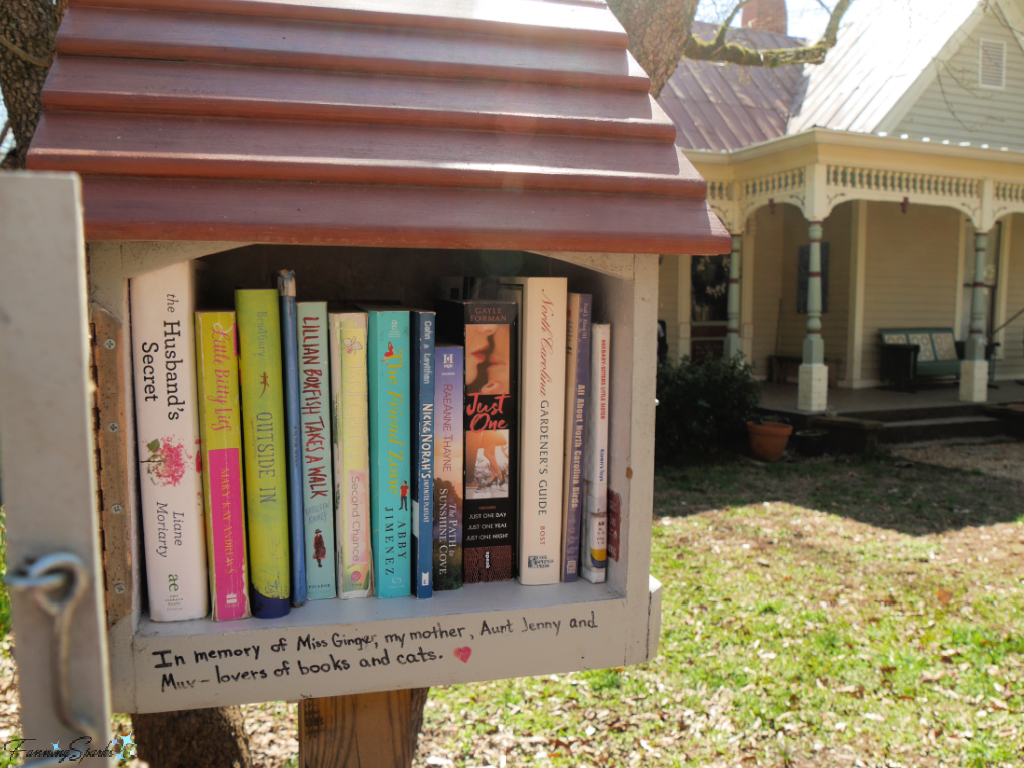
The very first Little Free Library was also created in tribute to the steward’s mother. Built by the late Todd Bol, it was a dollhouse-sized model of a little, red schoolhouse dedicated to his mother who was a school teacher and booklover. When “the Bols hosted a sale in their front yard, … Todd mounted the schoolhouse full of hardcovers and paperbacks on a post. It was the first Little Free Library, though it wasn’t called that yet. As the day went on, neighbor after neighbor was drawn to the Library, stopping to admire it, ask about it, buzz around it, browse through it, and generally get excited about it.” reports author Margret Aldrich in her book The Little Free Library Book. It was the beginning of the amazing grassroots, book-sharing program which became the Little Free Library non-profit, global organization.
Nowadays, there are Little Free Libraries on every continent (even Antarctica), in 115 countries around the globe and in every one of the USA’s 50 states. Little Free Library patrons can use the Little Free Library website or mobile app to find a library nearby. I used the app to find locations near my home including the one shown above and this one shown below.

I’m intrigued by Little Free Library’s global scope. I remember being pleasantly surprised to discover a book-sharing box in Amsterdam-Noord when visiting the Netherlands last year (see the blog post Artworks as Big as Walls in Amsterdam to learn more about our visit to Amsterdam-Noord). The unusual structure—a rowboat—is both eye-catching and practical! This is a very active library with its own Facebook page showcasing the latest books.
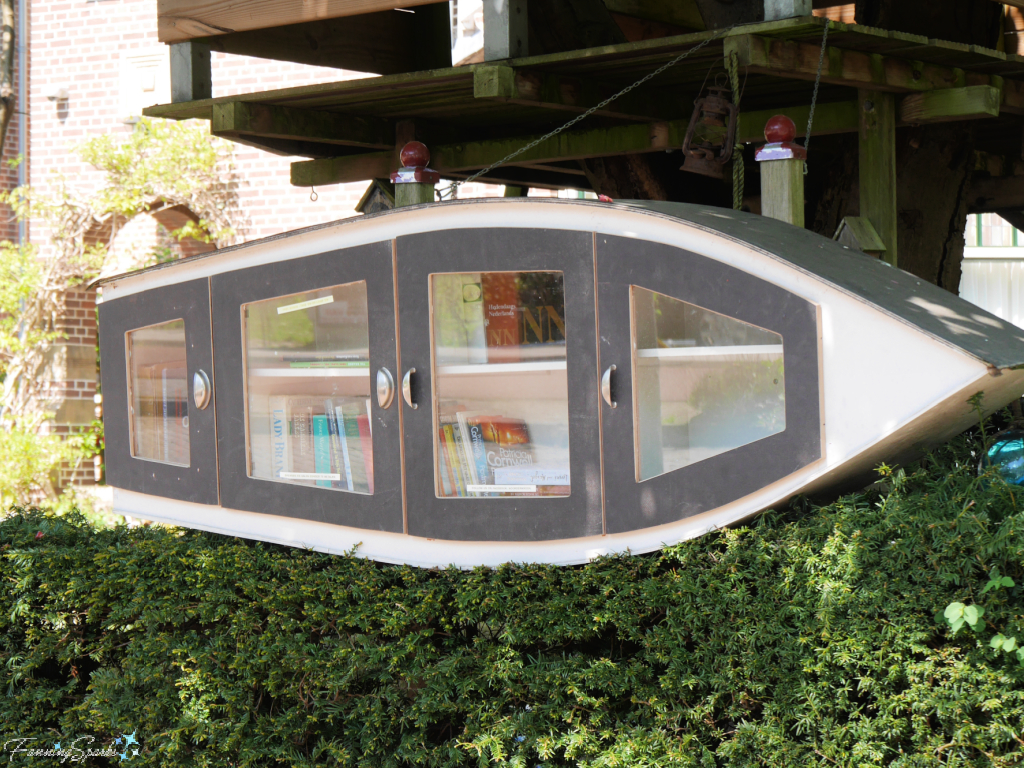
It was fascinating to study the selection of books available in the library. Now that I know about the Little Free Library mobile app, I hope to seek out more of these little treasures on my travels.
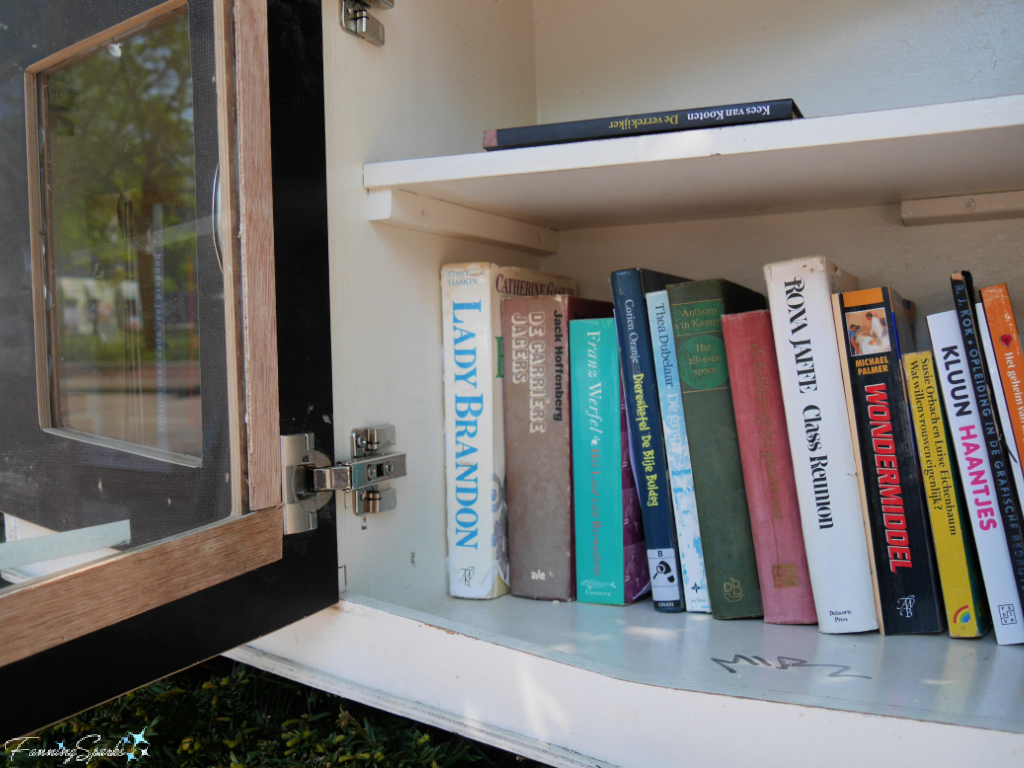
Interestingly, Little Free Library reports: “72% of volunteer stewards have met more neighbors because of their Little Free Library” and “92% of people say their neighborhood feels like a friendlier place because of a Little Free Library”. Sharing books at the neighborhood level is obviously helping Little Free Library reach their goal “to be a catalyst for building community”.
But the idea of a free exchange is not limited to Little Free Libraries. In Kentucky, for instance, I spotted two libraries at Berea Urban Farm, an educational market garden in the town of Berea. As pictured below, the library on the left contains books and is labeled Berea Urban Farm’s Tiny Library while the one on the right is the Berea Urban Farm Tiny Seed Library.
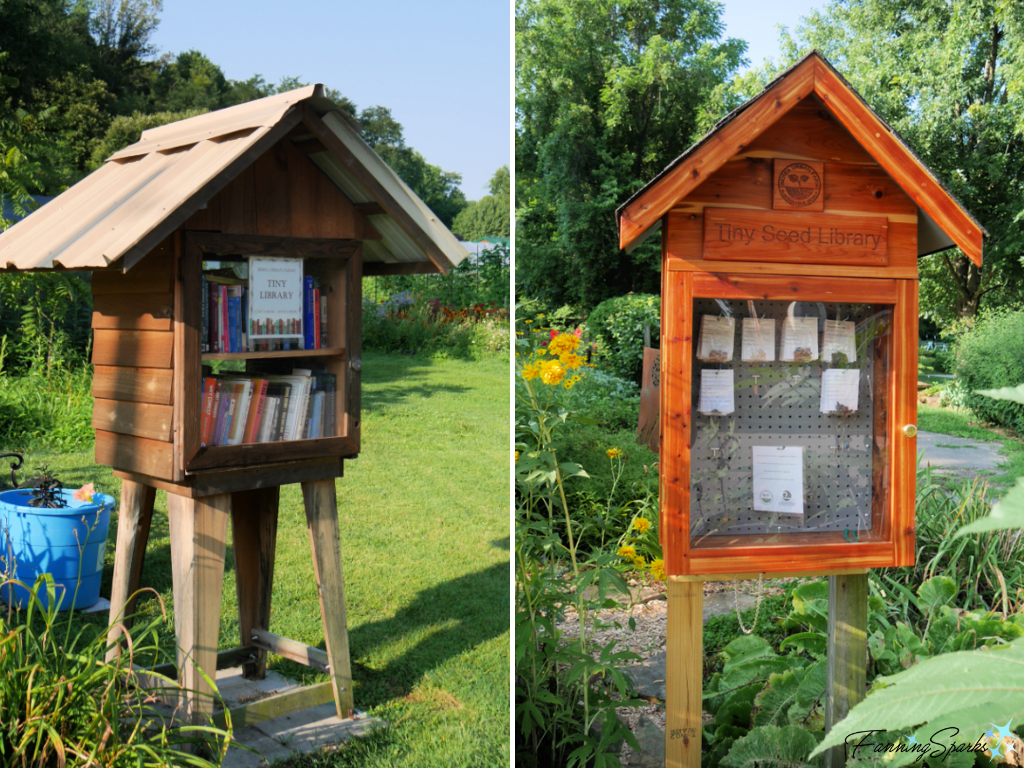
Here’s a closer look inside the Tiny Seed Library which contains an assortment of carefully-labelled vegetable and flower seeds.

Little Free Pantries and Blessing Boxes are another example of the free exchange movement. Supporters can leave food or personal hygiene items for others who may need them. I spotted this Blessing Box in Murphy, North Carolina.

This next example—a Doggie Stick Library—was spotted at the Flowering Bridge in Lake Lure, North Carolina. It’s colorful design and amusing function were a joyful surprise!
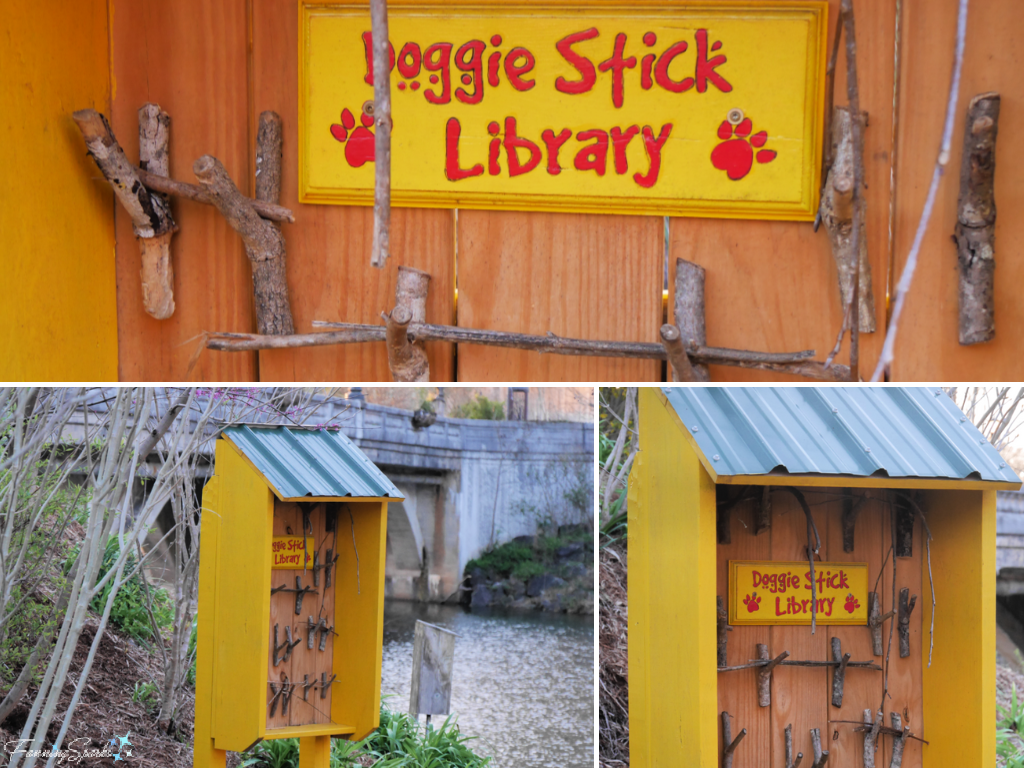
In the same way community-spirited Little Free Libraries have been embraced by booklovers around the world, artists and art lovers are spurring on the Free Little Art Gallery (FLAG) movement. It’s difficult to identify the first FLAG but, according to a June 2021 Smithsonian Magazine article, “Washington-based artist Stacy Milrany wasn’t the first person to open a petite art gallery. … But the trend has gained traction in large part thanks to her Seattle FLAG, which debuted in December 2020.” FLAGs have adopted the sharing culture of Little Free Libraries and patrons are encouraged to take and leave miniature pieces of art. In the first six months of Milrany’s Seattle FLAG, an estimated 600 artworks flowing in and out of her miniature art gallery.
There doesn’t appear to be an organized network for FLAGs… yet. But a little online research reveals FLAGs are popping up across North America and around the world.
In fact, there’s a FLAG in downtown Madison, Georgia—close to where I live. Thanks to the Madison Public Arts Commission this FLAG was opened in mid-2021. “Aside from appreciating the art on display, gallery patrons can also take a piece, leave a piece or both, … so, get those creative juices going and make some little art to share!”. said Karen Robertson, director of Main Street for the City of Madison, as quoted in a Morgan County Citizen Sept 2021 news article.
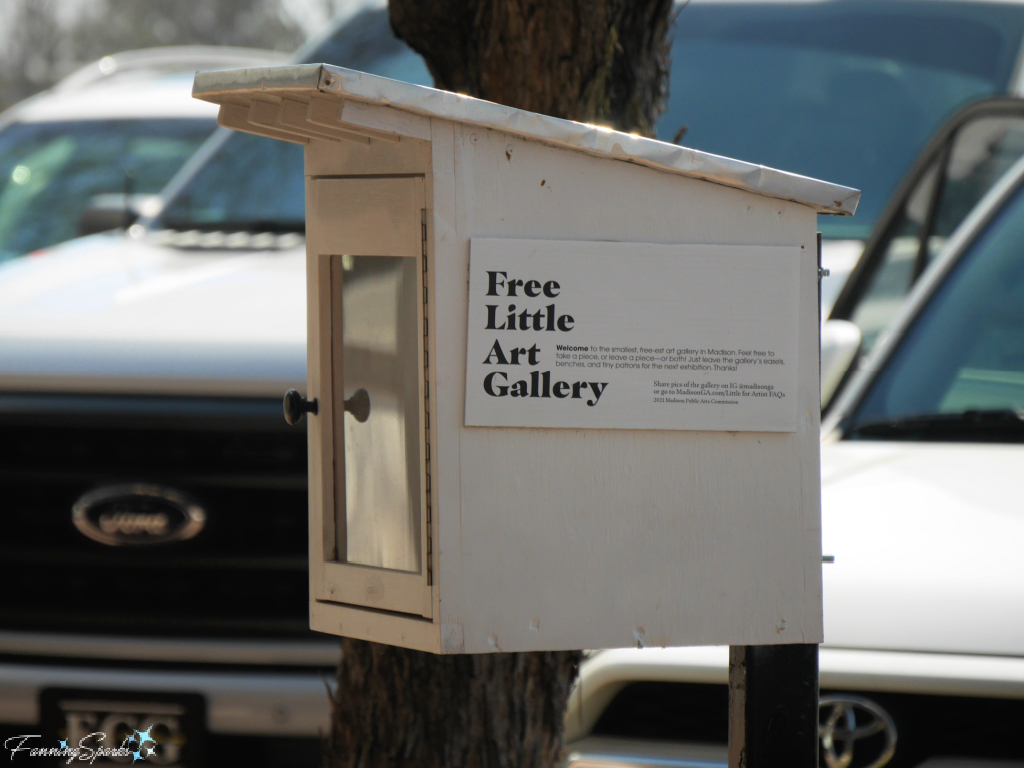
There were a few art objects, mostly children’s drawings, on display when I visited. I’m already planning what I might contribute on my next visit!
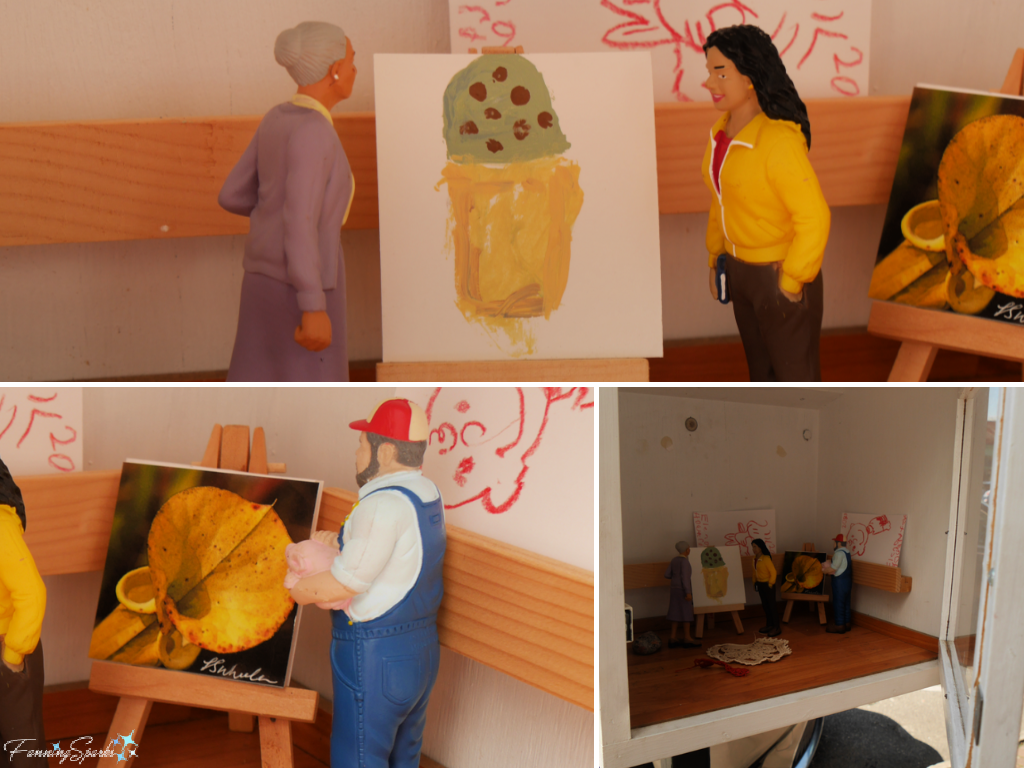
Whether it’s books, seeds, food items, art objects or dog toys, the “Take One. Leave One.” movement is obviously catching on!
More Info
Learn more about Little Free Library on the organization’s website or the Little Free Library mobile app.
See the FanningSparks blog post, Artworks as Big as Walls in Amsterdam, to learn about my visit to Amsterdam-Noord. Check out the Noorderkroon Facebook page for the latest news on the book boat in Amsterdam-Noord.
See the Sustainable Berea – Berea Urban Farm website to learn more about this educational market garden in the town of Berea, Kentucky.
To learn more about the Doggie Stick Library at the Lake Lure dog-friendly garden park, check out the Lake Lure Flowering Bridge website.
Information about Free Little Art Galleries can be found on Stacy Milrany’s website or Instagram account, on Instagram with #freelittleartgallery or on the Find a Free Little Art Gallery website.
The following books and articles are quoted in this blog post:
. The Little Free Library Book by Margret Aldrich which can be found here on Archive.org
. Why Free, Miniature Art Galleries Are Popping Up Across the U.S., a June 2021 article in Smithsonian Magazine
. Free Little Art Gallery Opens in Downtown Madison, a Sept 2021 in Morgan County Citizen
Today’s Takeaways
1. The mission of the Little Free Library nonprofit organization is to be a catalyst for building community, inspiring readers, and expanding book access for all through a global network of volunteer-led Little Free Libraries.
2. Seek out free exchanges in your neighborhood.
3. Consider how you can support a Little Free Library, Free Little Art Gallery, or other “Take One. Leave One.” initiative.

There’s a fascinating exhibition—Stephen Burks: Shelter in Place—currently on display at the High Museum of Art in Atlanta. The exhibition showcases the work of Stephen Burks, an award-winning, New York-based product designer. I counted nearly 100 pieces on display ranging from furniture to textiles to lighting fixtures to decorative items. But this exhibition doesn’t only display objects, it presents them within the context of Burks’s design practice.
“Burks advocate[s] for hand production as a strategy for innovation within industrial production” states the High Museum exhibition overview. “We integrate what we think of as handmade techniques into industrial production” Burks said in a 2022 interview with Curbed. It’s an intriguing concept—a novel approach which the exhibition thoughtfully lays out for the viewer to consider. I’d never be able to do justice to the depth and breadth of this exhibition in a single blog post so, instead, I’ll share a few favorite objects and stories.
Visitors to the Stephen Burks: Shelter in Place exhibition are greeted by the display shown below. The eye-popping piece at center stage, called Broom Thing, clearly signals Burks is no ordinary designer! Broom Thing, described as an abstract ambient object, is made of dyed broomcorn and sugar maple wood. Stephen Burks is listed as the designer and, surprisingly, Berea College Student Craft is listed as the maker.
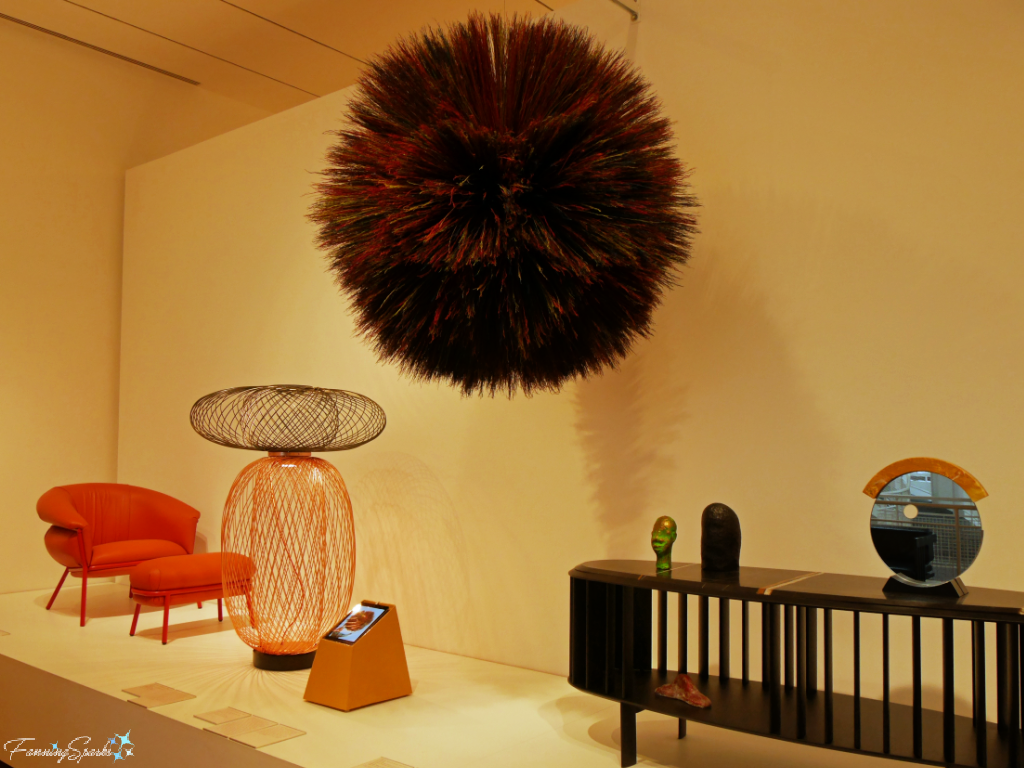
I’m familiar with Berea College having traveled to the charismatic town of Berea, Kentucky last summer. Berea is considered the Folk Arts and Crafts Capital of Kentucky. I was attracted by the Festival of LearnShops which is a series of short workshops on a wide variety of subjects such as sustainable living, Appalachian crafts, fiber arts, jewelry making and painting barn quilts. You can learn more about my visit in the posts: Have Barn Quilts Made a Comeback?, Lessons Learned from my First Barn Quilt Block and All Around the Amethyst Cabochon. Quilt squares, such as the trio shown below, are sprinkled throughout Berea. These were spotted in front of the Berea College Farm.
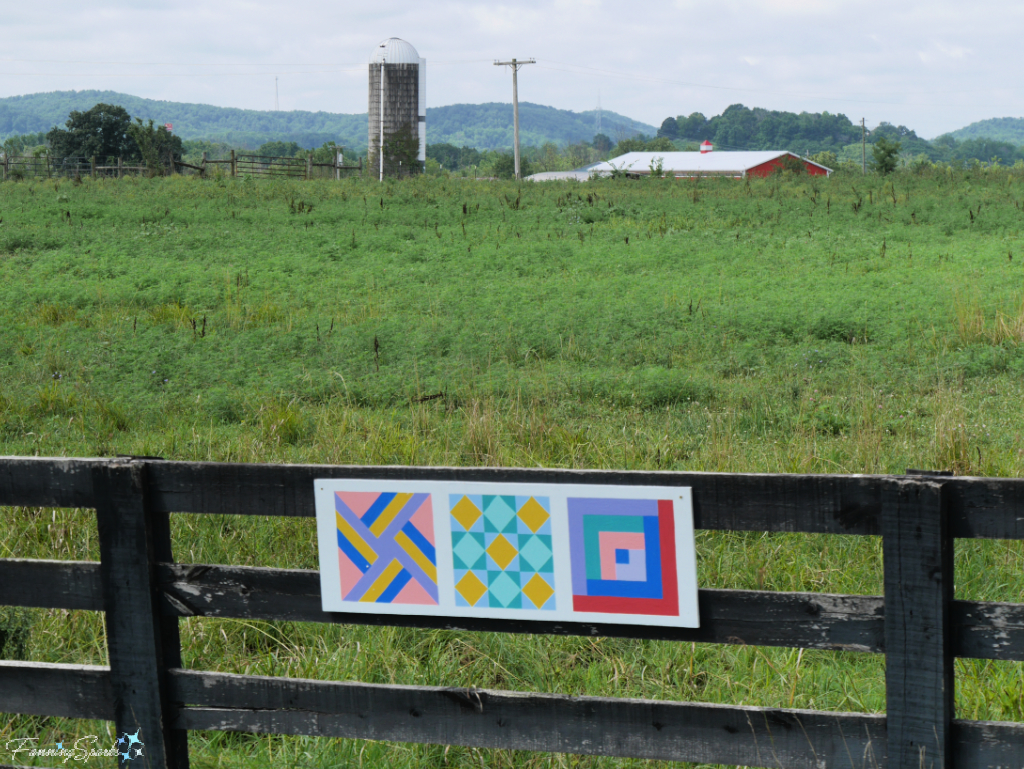
Berea College, located in the heart of the town, was founded in 1855 as “the first interracial and coeducational college in the [USA] South and consistently ranks among the nation’s leading liberal arts colleges…. [It] offers a high-quality education to academically promising students with limited economic resources. … Berea College is one of only eight federally recognized Work Colleges in the United States … [It engages] students in the purposeful integration of work, learning, and service … all resident students have jobs… [and] no Berea student ever pays tuition.”
Berea College Student Craft, the maker of Broom Thing, is an essential part of Berea College’s Labor Program. “The program provides opportunities for over 100 students each term to study, produce, and teach about craft with a focus on woodworking, fibers, ceramics, and broom-making. In addition to nurturing makers, [they] are committed to helping students express their identities and hone their design skills to share authentic student-designed products.”
The connection between Stephen Burks and the Berea College Student Craft is explained on the Design Within Reach website: “In 2018, Berea College invited industrial designer Stephen Burks to design new products for students to make. Instead, Burks used the opportunity to create a collaborative process involving students in the design. His partnership proved transformative for Berea by broadening its scope and vision for student creativity and their relationship to craft.”
The Broom Thing exhibit card elaborates “Burks’s mentorship within the Berea College Student Craft program was grounded in his ability to innovate traditional crafts to create modern, and sometimes experimental, forms. Berea students trained in the broomcraft workshop were utilizing established methods and yielding the same results.”
I imagine the traditional methods used by the Berea students would be similar to those I learned at the John C Campbell Folk School. Mark Hendry, a full-time artisan and instructor specializing in Brooms and Basketry, taught us the traditional methods of turning dried broomcorn (shown on left below) into beautiful, one-of-a-kind, artisan brooms. See the FanningSparks’ blog post Swept Away by Broom Making for the full story.
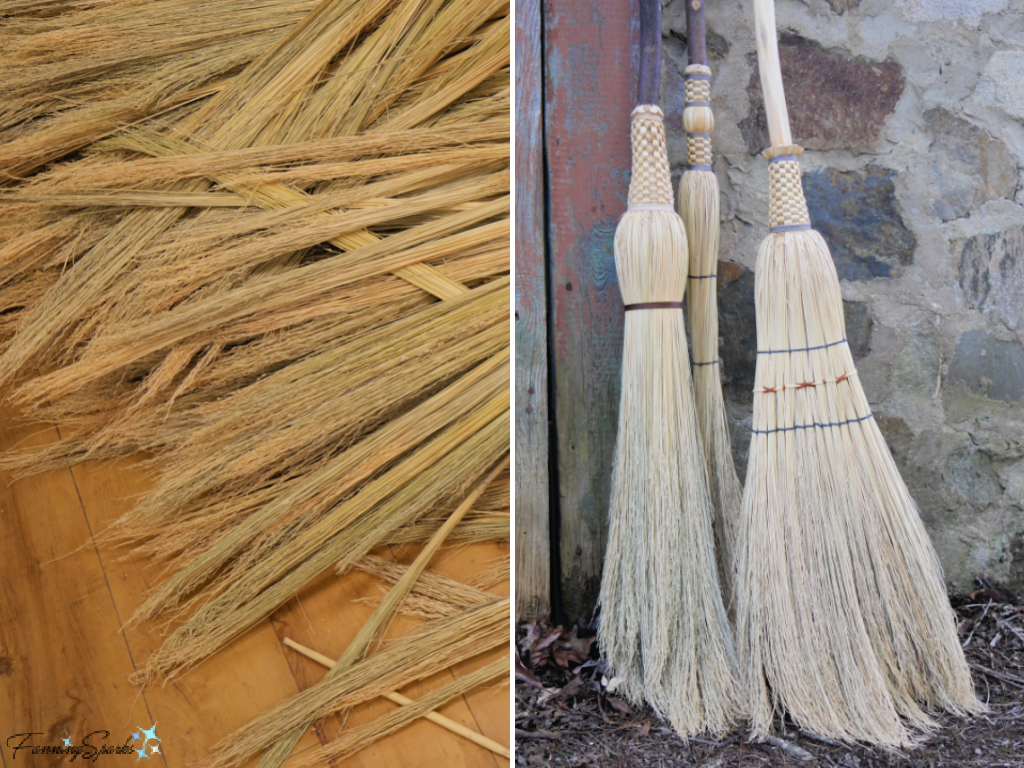
Upon closer examination, the long, fibrous, seed branches of the broomcorn are clearly visible in Broom Thing.
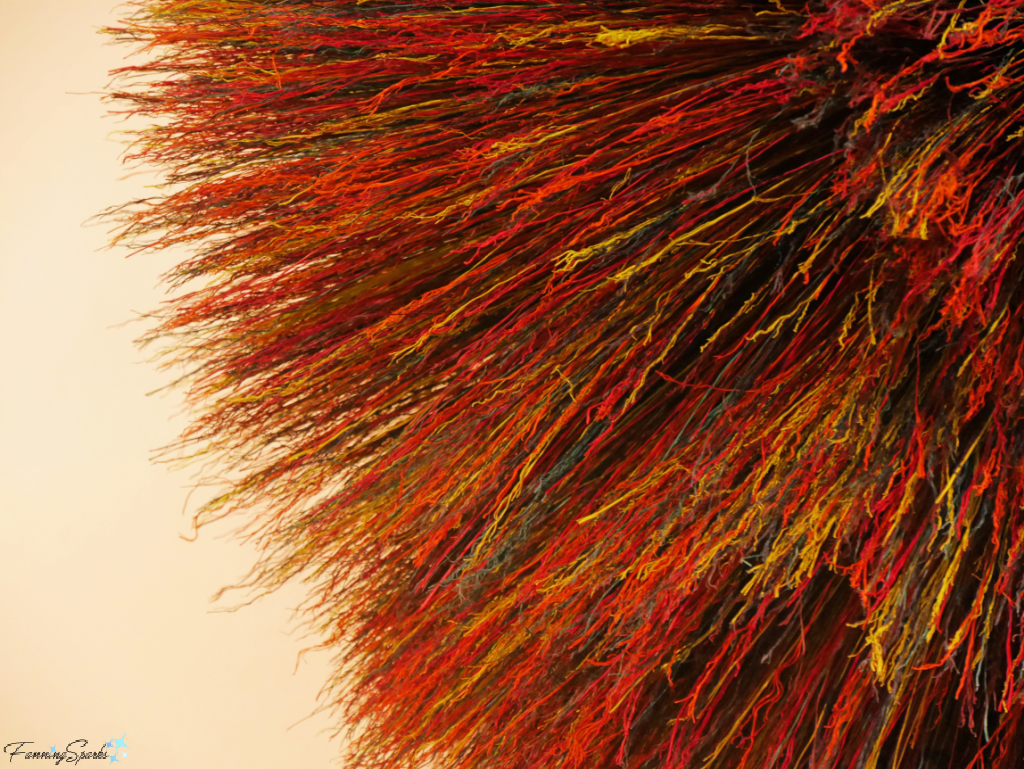
The exhibit card continues “Broom Thing, which Burks created alongside these students, is a radical new expression of a broom as a non-functional object … The brightly colored, ambient work embodies the transformative power of what is possible in craft when experimentation collides with tradition.”
A 2022 Wallpaper* article elaborates, “Among Berea College’s departments, Burks was most fascinated by traditional broom craft. ‘The broom craft department is still dyeing their own broom corn and still making brooms in a way that they’ve been making for the past hundred years – one of the last places in America to produce brooms traditionally,’ he says. His collaborative piece with the department is ‘Broom Thing’, an abstract ‘ambient object’ combining 26 brooms into a 4ft diameter sphere, a design that took the craft outside of its traditional function. ‘I felt like I had to go in search of a new form, a new way to use this technique that hadn’t been done before. It is quite surprising in its suggestion of what could be possible in each of the craft sectors if we pursued a more conceptual object rather than a functional one.”
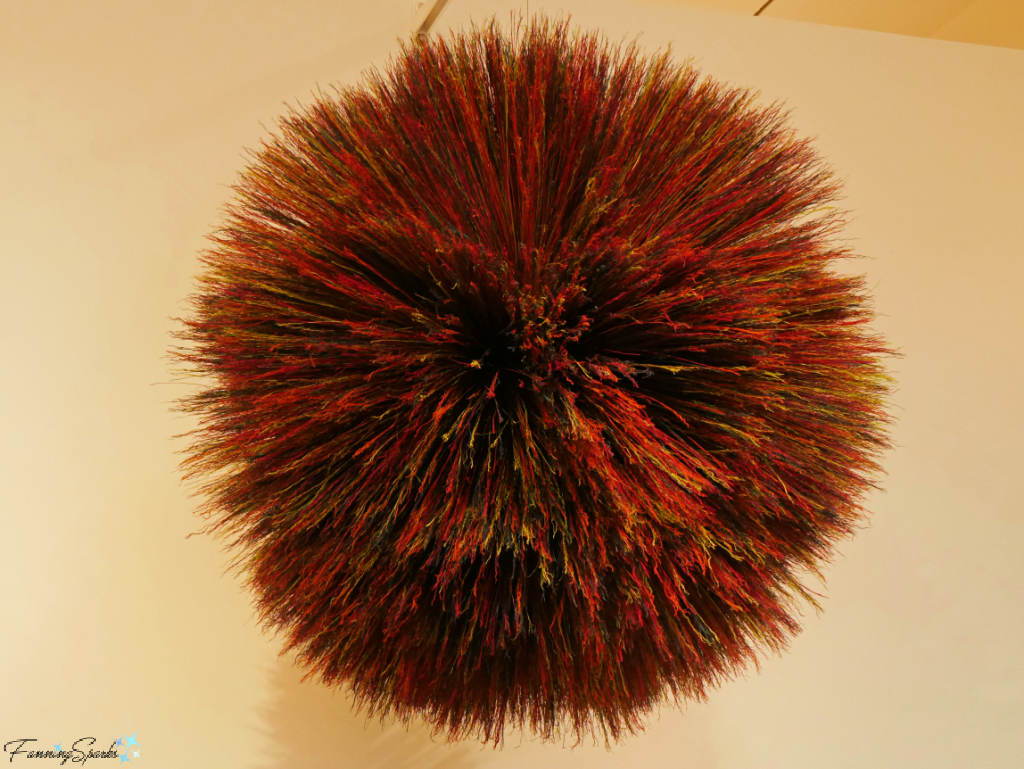
Another splendid outcome from the Berea College initiative is Community Baskets. The exhibit card provides this background: “An important practice in Appalachian and Shaker traditions, basketry is one of the oldest forms of design. In making Community Baskets at Berea College, students were taught the basic principles of wood construction, such as color, graduations, treatments, flexibility, and strength, using the traditional composition of oak and aluminum to bend and hold each part together in layers.”
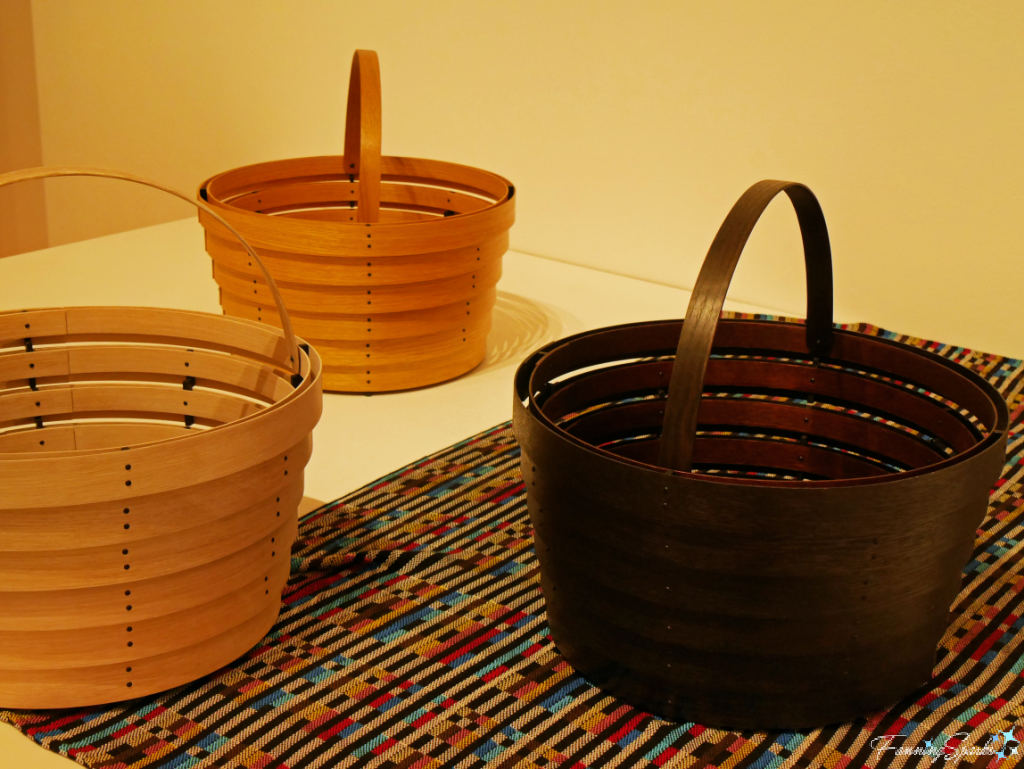
“Using this project as an example, Burks encouraged students to move away from the minimalist manufacturing of craft objects to instead let their hand show through in their designs. The hand of the artist separates craftspeople from mass production; encouraging students to accept this human aspect of design is one of Burks’s most important contributions to the program.”
The High Museum exhibition overview quotes Burks: “Hands have power. Hands have imaginative power. Hands have communal power. Hands have political power. And hands have economic power. Even today, the hand is capable of doing things that machines cannot. My work is about finding opportunities for innovation in the space between handcraft and industry while hopefully extending craft traditions into the future.”
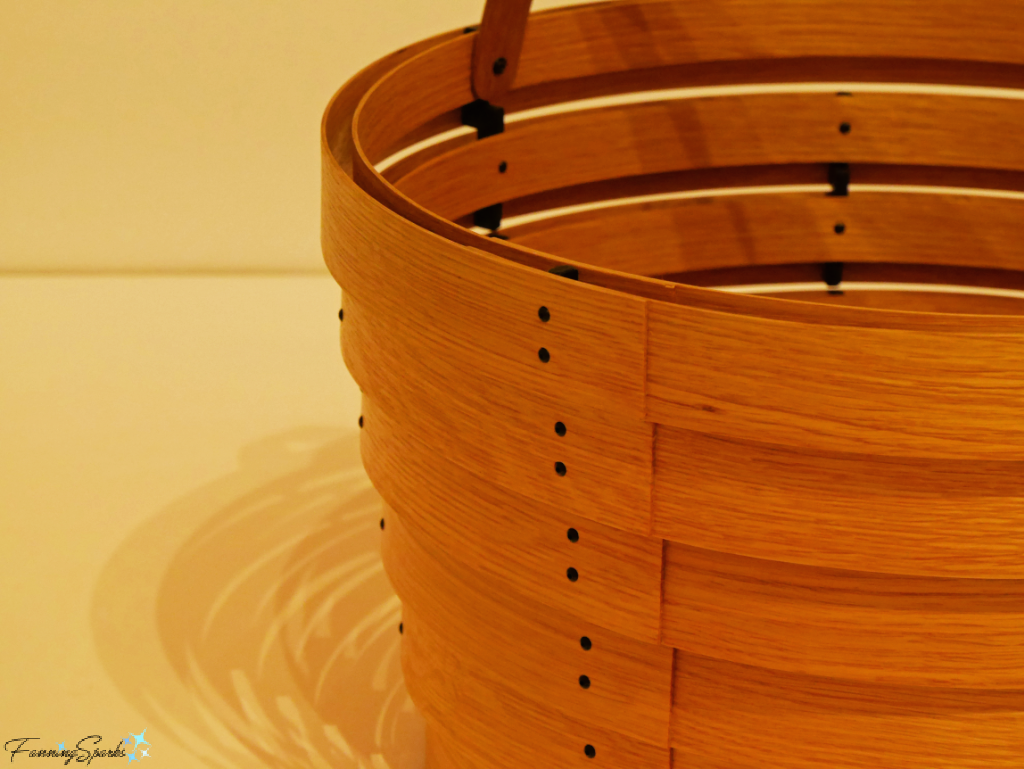
Basketry is another traditional craft taught at the John C Campbell Folk School. My first basketry experience, as shared in the blog post Weave a Market Basket, was making this market basket with basket reed. Susan B Taylor, a highly-regarded, talented basket maker, taught the class.
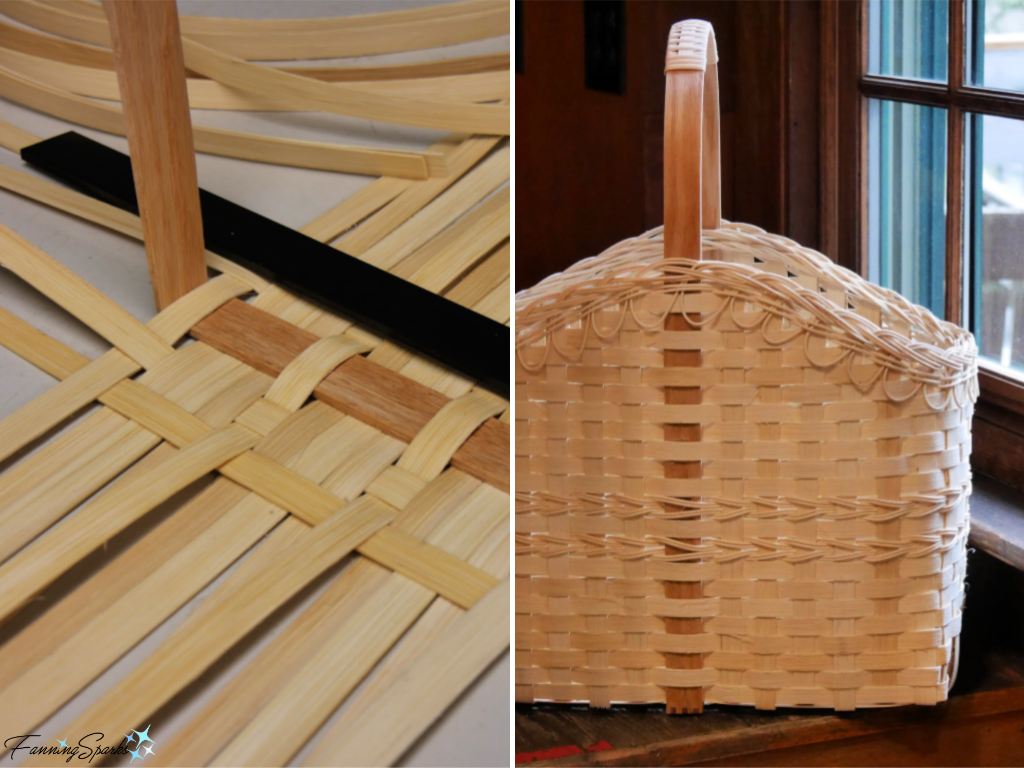
I had the opportunity to make a second basket in the class Cannon County Style, White Oak Egg Basket taught by award-winning, master basket maker Sue Williams. Made of white oak with rib-and-split basic construction, the egg basket was a fun challenge. As explained in the blog post, You CAN Put All Your Eggs in this Basket, we followed the traditional basket making techniques of Cannon County, Tennessee.
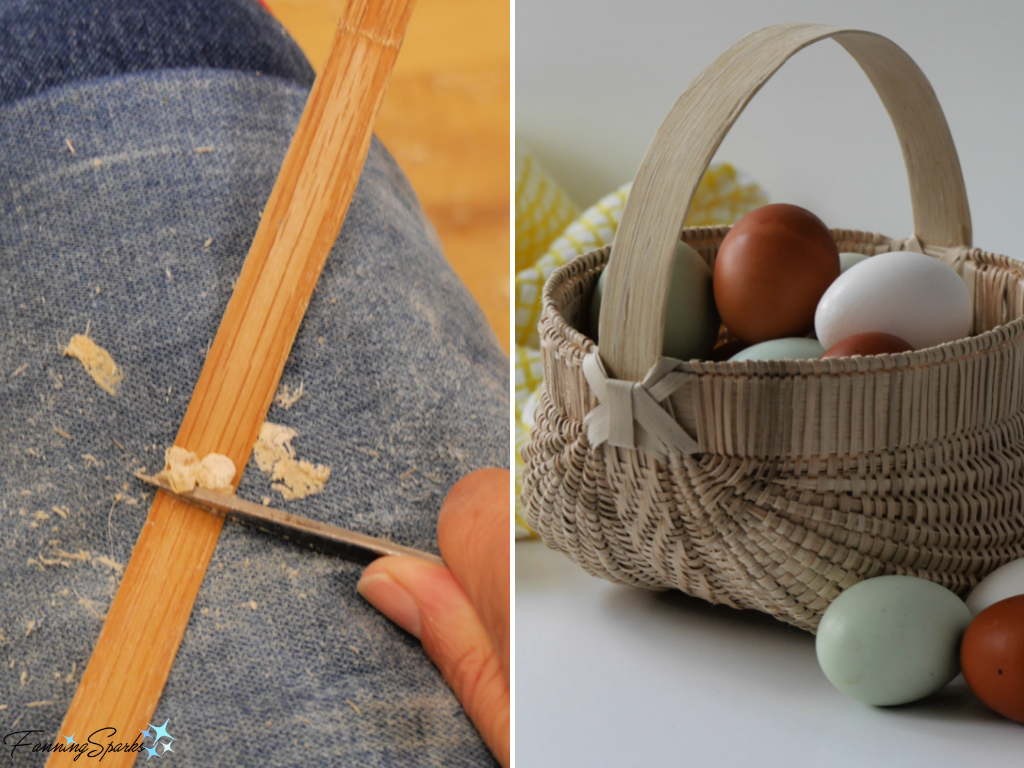
But art objects from the craft-related experiments at Berea College were only one facet of the Shelter in Place exhibition. Other works, such as this Kida Swing, showcased Burks’s product designs. This inviting seat was designed by Burks for DEDON, a German company specializing in handcrafted luxury outdoor furniture. The Kida Swing is a stunning demonstration of “the union of industrial materials with high-level craft technique”.
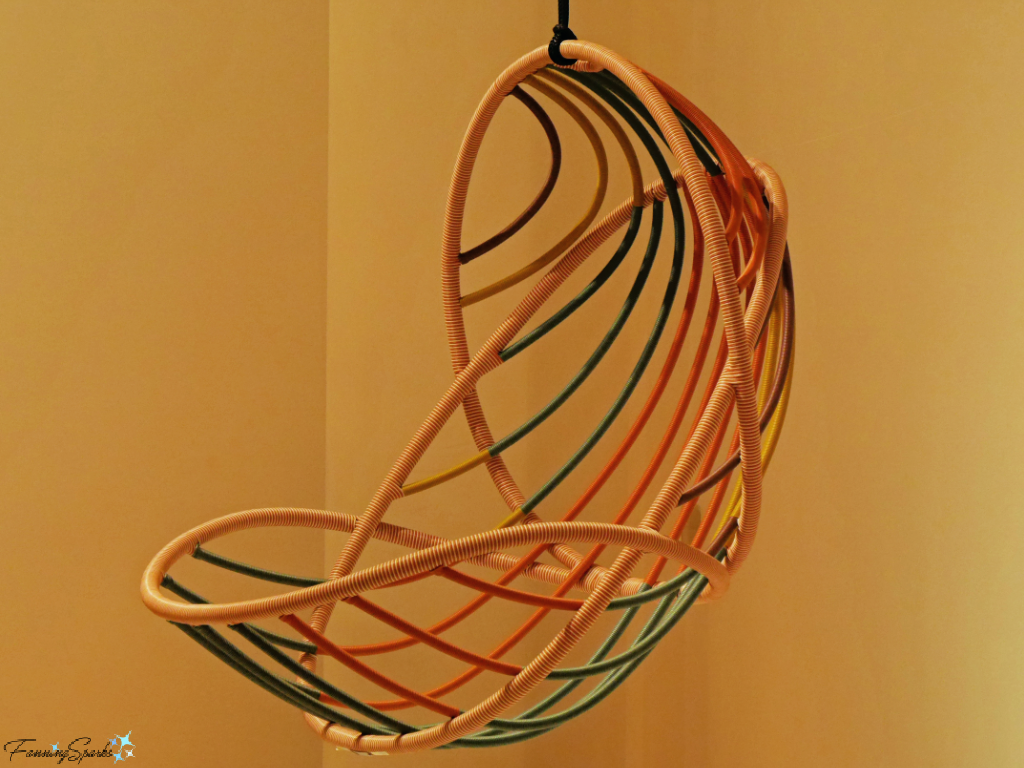
As explained on the exhibit card: “This airy design is a departure from DEDON’s dense weaving style, demonstrating how collaboration leads to innovation when there is space for creativity. Kida Swing was the result of a weeklong workshop in the Philippines. Burks challenged the traditional weaving techniques of the master weavers there, who in turn helped him innovate on Kida Swing’s design.”
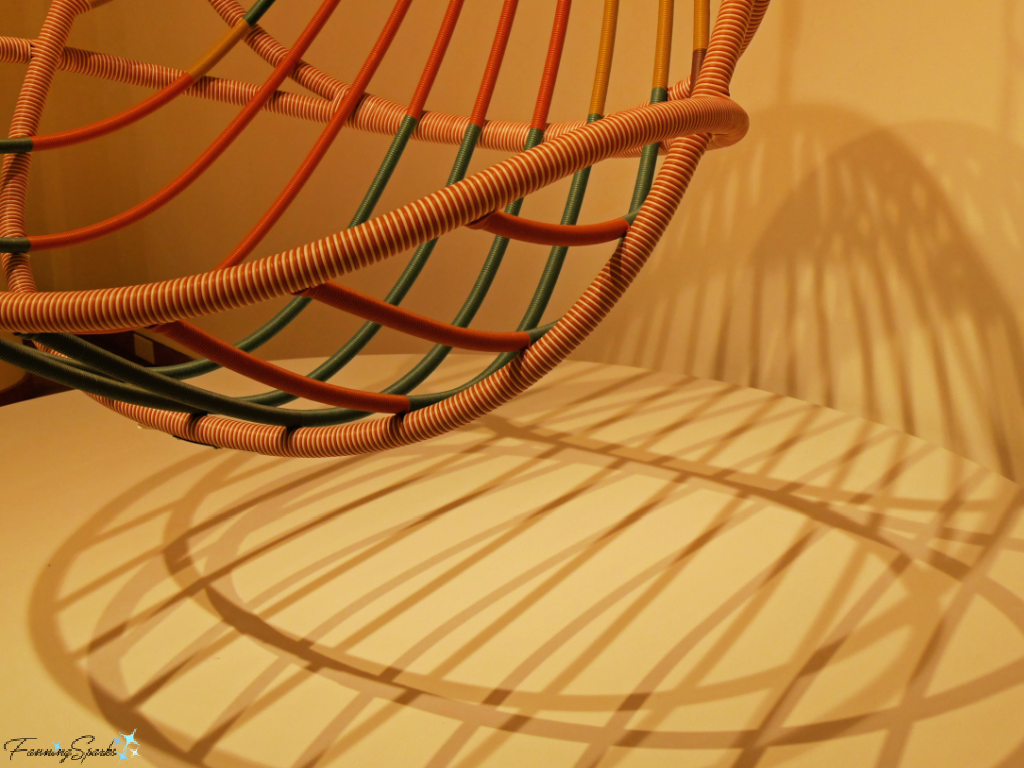
Burks’s Kida Swing is beautifully illustrated on DEDON’s website (see screenshot below) with the explanation: “Stephen Burks’ award-winning collection is as delightful to look at as to use. The hanging longue chair is the first collection to be wrapped rather than woven in 834 meters of DEDON Fiber Touch, and features a cradle-like organic form that’s open, airy, light and inviting. Once inside, users can luxuriate in KIDA’s comfy cushion, which covers the entire seating area, and feel, in Burks’ own words, “as free as the breeze” when swinging.”

Another facet of the exhibition is “a speculative project called Shelter in Place that emerged out of questions about creative agency and ideas of radical home making during the global pandemic lockdown.” Several fascinating prototypes from this initiative were displayed but my favorite was Burks’s Spirit House. Interestingly, a replica of Burks’s original work on paper and a rendering of his design were on display allowing the viewer to trace the evolution of this project.
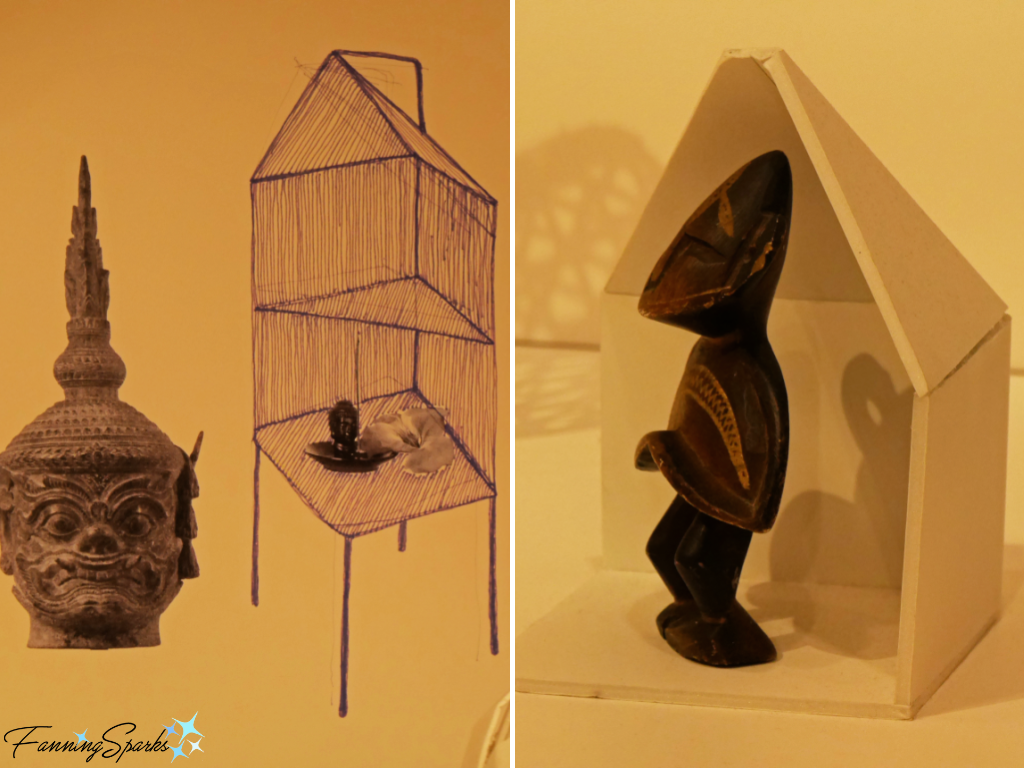
“Inspired by the human need for ritual, Spirit House is the direct result of Burks’s respect for global cultural traditions and his desire to incorporate them into his life, not just as designs. The partially pitched roof structure, two walls, and an open construction pay homage to the spirit houses found across Southeast Asia.” states the exhibit card. I was immediately reminded of the spirit houses, like the one pictured below, which I saw in Thailand several years ago.

“Creating a definitive space of spiritual reverence, the pedestalled room supports mementos, objects that hold memory, and typically a lit candle. Here, Burks has replaced the candle with an electric bulb.”
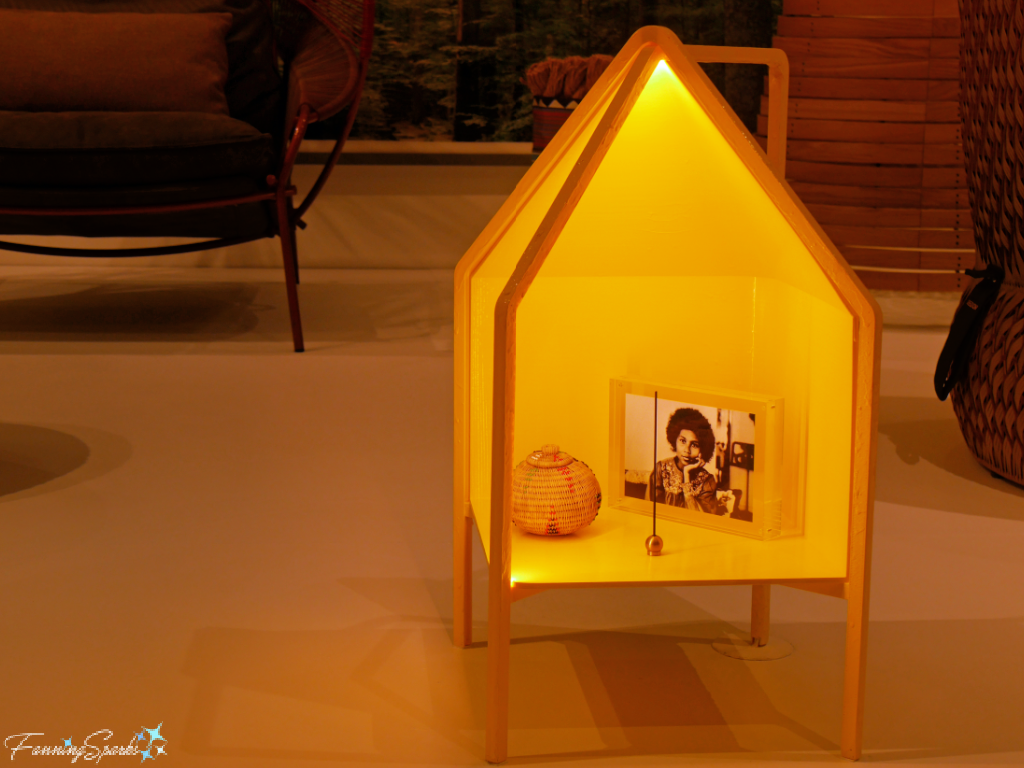
“This object welcomes ceremony and open communication with much-needed spiritual practices, which many of us reconnected with during the pandemic.”
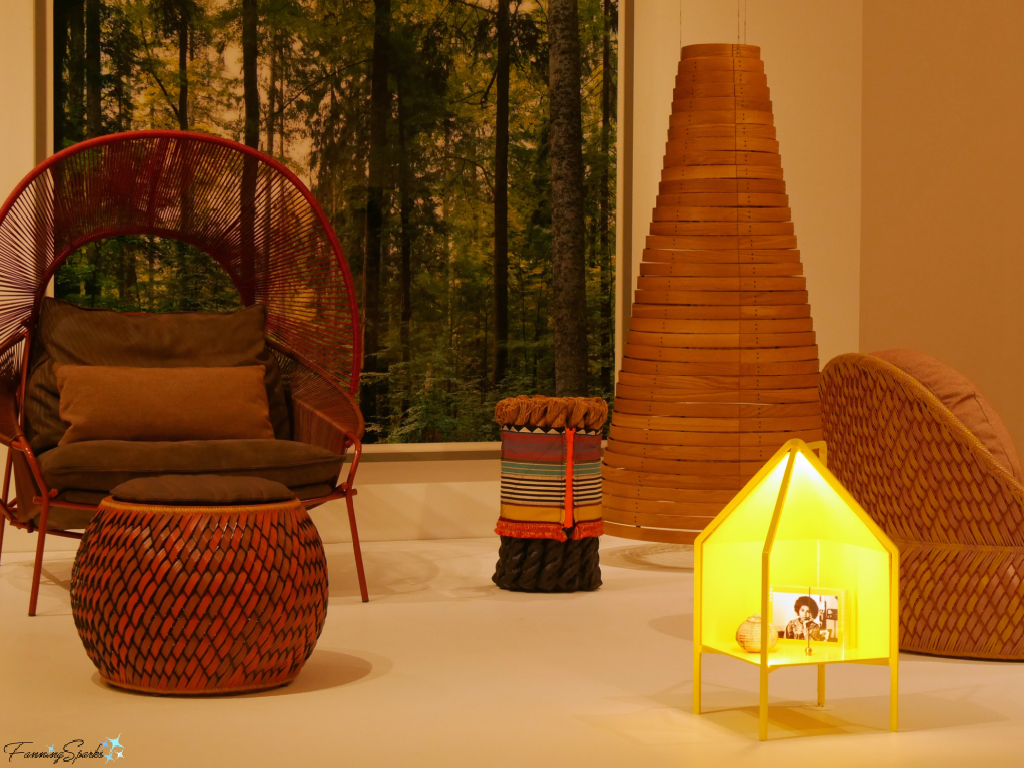
I’m grateful to have had the opportunity to view and consider the Stephen Burks: Shelter in Place exhibition. It’s a thought-provoking look into the fascinating world of leading-edge design.
More Info
The Stephen Burks: Shelter in Place exhibition is on view through March 5, 2023 at the High Museum of Art in Atlanta, Georgia.
Stephen Burks is the founder and principal of Stephen Burks Man Made – an internationally recognized product development consultancy based in New York. Over the past twenty years, the studio has engaged the transformative power of craft techniques as a strategy for innovation for some of the world’s leading design-driven brands.
The following articles are quoted in this blog post:
. Stephen Burks Wants to Finish a 20-Year-Old Conversation With Fran Lebowitz, a 2022 article in Curbed
. Stephen Burks and Kentucky Students Push Craft Boundaries, a 2022 article in Wallpaper*
. Crafting Diversity at Berea College – Evolving Craft, a recent article in Design Within Reach
Berea College offers a high-quality education to academically promising students with limited economic resources. Check out the Berea College website for more information about the college and the Berea College Student Craft program.
To view products from this program, check out the Design Within Reach website. They are the exclusive retail partner of the student-made Crafting Diversity Collection, designed by Stephen Burks Man Made in partnership with Kentucky’s Berea College.
See the DEDON website to learn more about this German company which specializes in handcrafted luxury outdoor furniture.
The following FanningSparks blog posts are mentioned in this blog post:
. Have Barn Quilts Made a Comeback?
. Lessons Learned from my First Barn Quilt Block
. All Around the Amethyst Cabochon
. Swept Away by Broom Making
. Weave a Market Basket
. You CAN Put All Your Eggs in this Basket
The mission of the John C Campbell Folk School is to “transform lives, bring people together in a nurturing environment for experiences in learning and community life that spark self-discovery.” You can learn more on their website. You may also enjoy my previous posts about the Folk School.
Today’s Takeaways
1. “The hand of the artist separates craftspeople from mass production.” Stephen Burks
2. “Collaboration leads to innovation when there is space for creativity … Burks challenged the traditional weaving techniques of the master weavers there, who in turn helped him innovate” Stephen Burks: Shelter in Place exhibition
3. “My work is about finding opportunities for innovation in the space between handcraft and industry while hopefully extending craft traditions into the future.” Stephen Burks


